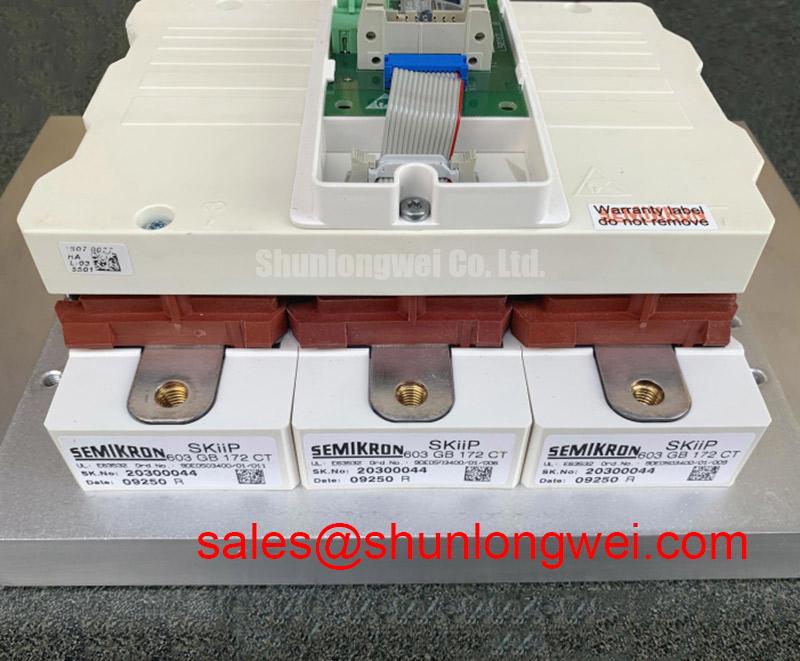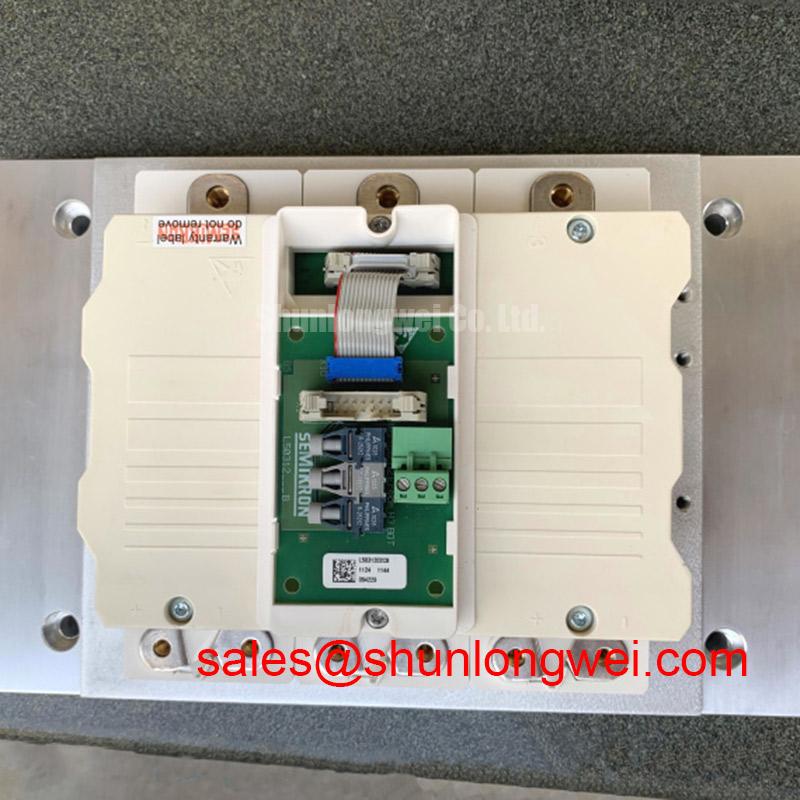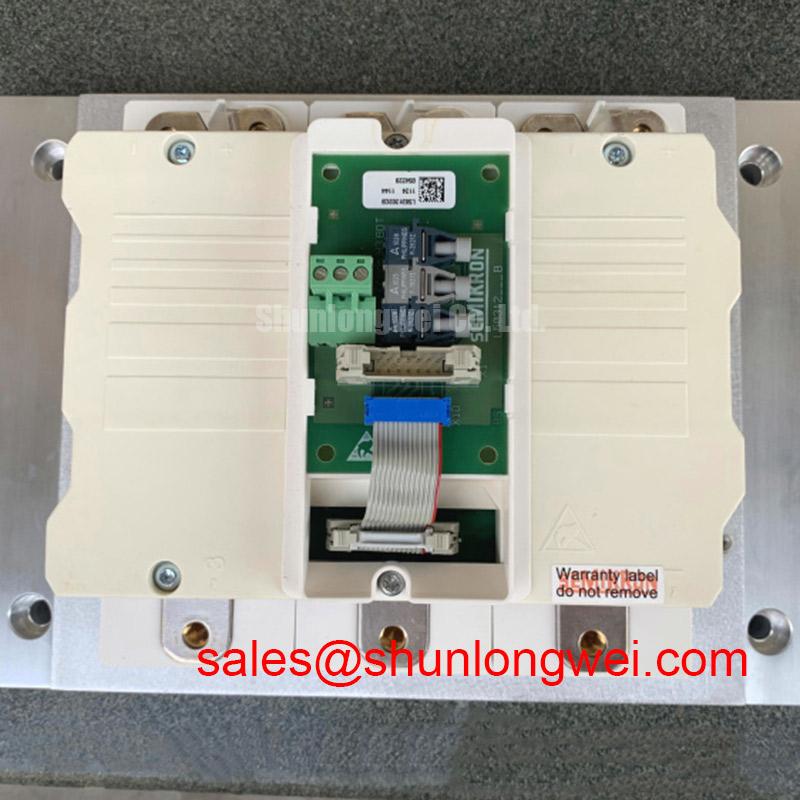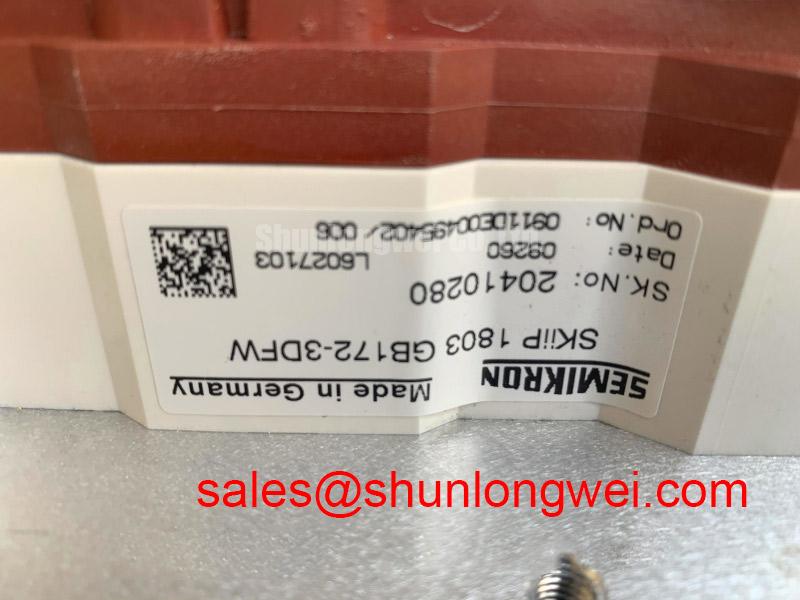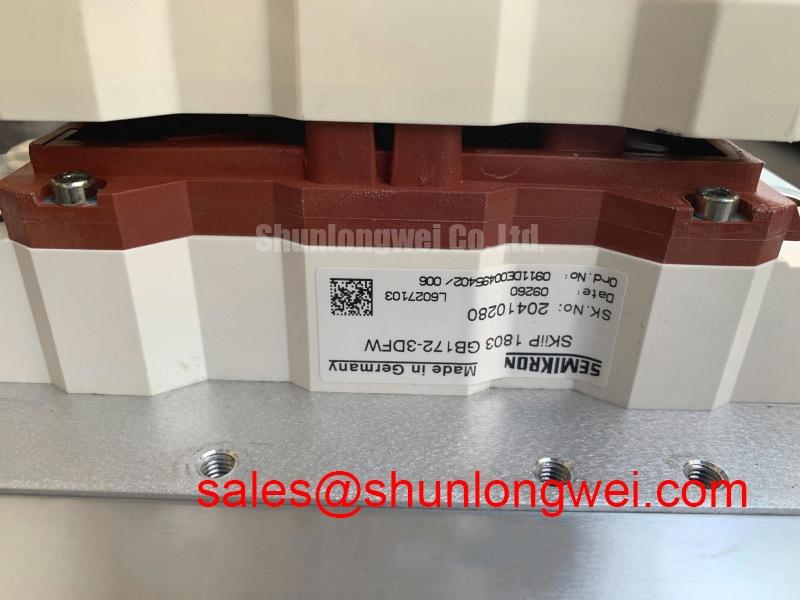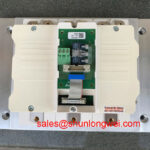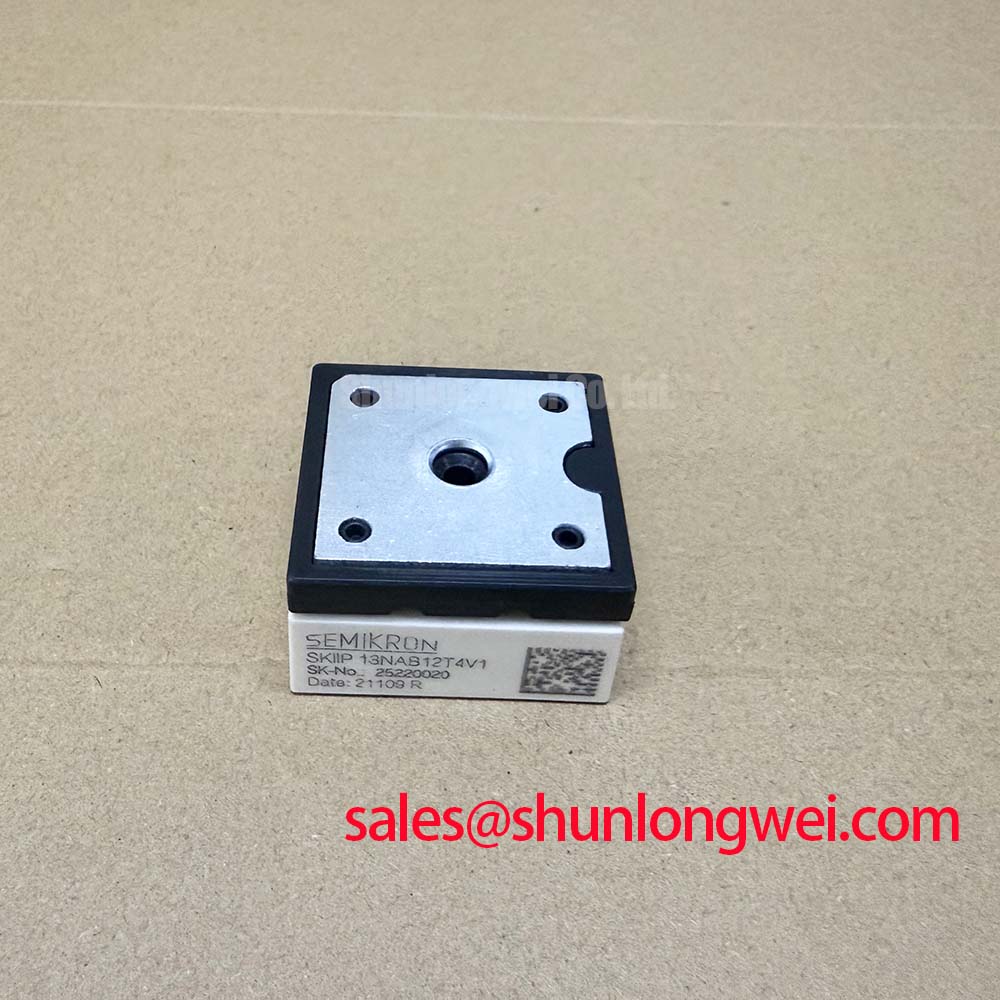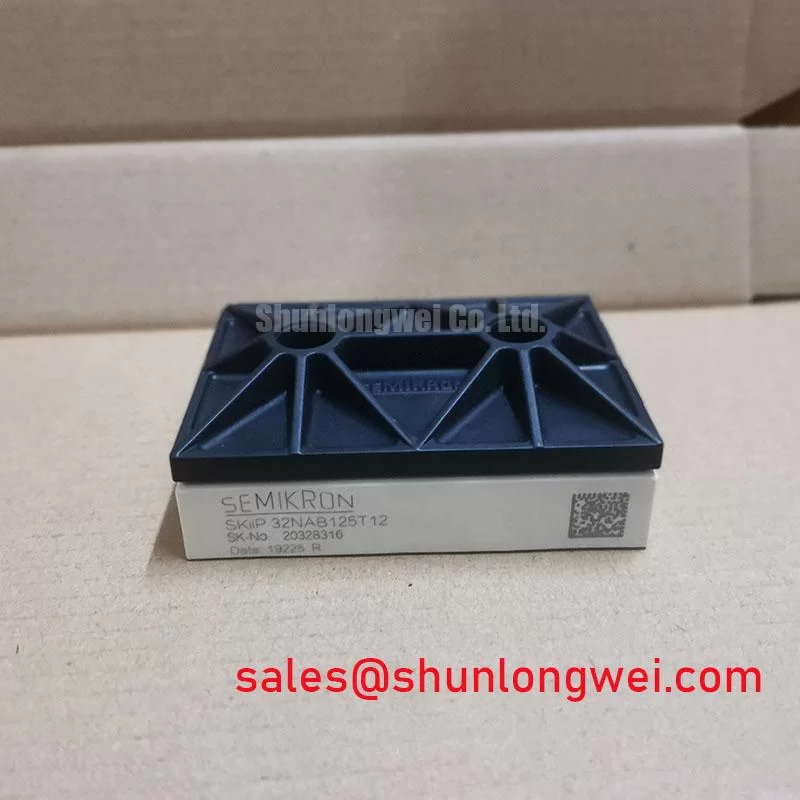Content last revised on November 19, 2025
SKiiP1803GB172-3DFW IGBT Module: Engineering Deep Dive into Thermal Reliability for Megawatt Inverters
An Expert Overview of the SKiiP® 3 IPM
The SKiiP1803GB172-3DFW Intelligent Power Module (IPM) sets a new standard for reliability in megawatt-class inverters through its advanced solder-free pressure contact technology. This module delivers key specifications of 1700V | 1800A | Rth(j-s) 0.024 K/W, offering engineers superior thermal cycling capability and simplified system integration. By eliminating solder layers prone to fatigue, its pressure contact design ensures a longer operational lifespan and consistent thermal performance under demanding cyclic loads. For designers of multi-megawatt wind turbine converters and large industrial drives, the SKiiP1803GB172-3DFW is the definitive choice for maximizing uptime and power density.
Application Scenarios & Value
System-Level Benefits in Renewable Energy and Heavy Industry
The SKiiP1803GB172-3DFW is engineered for power conversion systems where operational reliability is paramount. Its primary application is in the heart of multi-megawatt Wind Turbine Converters, which face a unique and demanding engineering challenge: extreme thermal cycling. Fluctuating wind speeds cause wide variations in power output, leading to significant temperature swings within the power module. In conventional soldered modules, this repeated expansion and contraction can lead to solder fatigue and eventual failure, necessitating costly, and often remote, maintenance. The SKiiP1803GB172-3DFW directly mitigates this risk. Its pressure contact system creates a robust yet flexible electrical and thermal connection that is resilient to mechanical stress, significantly improving the system's long-term reliability and extending the service life of the entire inverter.
Beyond renewables, this module is an exceptional fit for high-power Large Industrial Drives, such as those used in mining, marine propulsion, or heavy manufacturing. In these applications, the module's high current handling of 1800A and robust thermal design ensure continuous, reliable operation under heavy-load conditions, contributing to greater productivity and reduced downtime. For applications within the 1700V class but at a lower power node, the related FS450R17KE3 provides a different power-to-footprint ratio.
Key Parameter Overview
Decoding the Specs for Enhanced Thermal Performance and System Integrity
The performance of the SKiiP1803GB172-3DFW is defined by specifications that directly impact system efficiency and reliability. The following parameters are critical for engineering evaluation.
| Parameter | Symbol | Value | Condition |
|---|---|---|---|
| Collector-Emitter Voltage | VCES | 1700 V | Tj = 25 °C |
| Nominal IGBT Current | IC,nom | 1800 A | Ts = 25 °C |
| Max. Continuous DC Current | IC | 2250 A | Ts = 25 °C, Tj = 175 °C |
| Collector-Emitter Saturation Voltage | VCE(sat) | 1.95 V (typ.) | IC,nom = 1800 A, Tj = 150 °C |
| Thermal Resistance, Junction to Heatsink (IGBT) | Rth(j-s) | 0.024 K/W | per IGBT |
| Short Circuit Withstand Time | tsc | 10 µs | VCC = 1000 V, VGE ≤ 15 V, Tj = 150 °C |
| Max. Junction Temperature | Tj,max | 175 °C | - |
Download the SKiiP1803GB172-3DFW datasheet for detailed specifications and performance curves.
Interpreting the Data: The exceptionally low Thermal Resistance (Rth(j-s)) is a cornerstone of this module's design. Think of Rth(j-s) as the width of a highway for heat. At 0.024 K/W, this "highway" is extremely wide, allowing the massive amount of waste heat generated at 1800A to escape quickly from the silicon chip to the heatsink. This prevents thermal bottlenecks, keeping junction temperatures lower, which is a direct factor in increasing the module's operational lifespan.
Frequently Asked Questions
Engineering Inquiries on Reliability and Integration
What is the primary engineering advantage of the pressure contact system in the SKiiP1803GB172-3DFW?
Its main advantage is a dramatic increase in operational lifetime, especially under harsh thermal cycling conditions. By completely eliminating solder layers between the substrate and the baseplate, it eradicates a primary failure mechanism—solder fatigue—leading to superior durability in applications like wind and solar inverters.
How does the integrated gate driver in this IPM simplify the design of a megawatt-class inverter?
The integrated driver streamlines the design process by reducing external component count, saving PCB space, and lowering assembly complexity. It guarantees optimal and safe switching by matching the driver to the IGBT characteristics and incorporates pre-configured protection features like Under-Voltage Lockout (UVLO), short-circuit, and over-temperature detection, accelerating time-to-market.
With a nominal current of 1800A, how critical is the Rth(j-s) of 0.024 K/W for thermal management?
It is absolutely critical. This extremely low thermal resistance is essential for efficiently extracting the significant heat generated at high currents. This enables the system to operate at higher power densities without exceeding the maximum junction temperature, potentially allowing for smaller, more cost-effective heatsink solutions while maintaining high reliability.
What role does sinter technology play in the module's long-term reliability?
Sinter technology is used to attach the silicon chips to the ceramic substrates. Unlike solder, the sintered silver layer forms a strong, homogenous bond with extremely high thermal conductivity and mechanical robustness. This prevents delamination and degradation over time, ensuring consistent thermal management and contributing significantly to the module's overall durability.
Technical Deep Dive
Anatomy of Reliability: A Closer Look at the Solder-Free Pressure Contact Design
The standout feature of the SKiiP1803GB172-3DFW is its sophisticated mechanical and thermal design, built upon Semikron's SKiiP® Technology. This is not merely an incremental improvement; it is a fundamental shift away from conventional module construction. A traditional IGBT module relies on multiple layers of solder to create the electrical and thermal paths from the silicon chip to the heatsink. While effective, these solder layers are often the weakest link, susceptible to cracking and degradation over thousands of thermal cycles.
The SKiiP architecture replaces these vulnerable solder layers with a highly reliable pressure contact system. To draw an analogy, a conventional soldered module is like a solid, rigid bridge. Over time, constant expansion and contraction from temperature changes can cause critical structural cracks. The SKiiP's pressure contact system is more like a modern suspension bridge; it's engineered with inherent flexibility to absorb these stresses, ensuring a reliable connection for a much longer lifespan. This design philosophy ensures that the module maintains its low thermal resistance and electrical integrity even after years of service in demanding environments, making it a strategic component for long-term infrastructure investments like utility-scale renewable energy projects.
This strategic approach to reliability enables system designs that not only push the boundaries of power density but also align with the stringent operational lifetime requirements expected in the heavy industrial and renewable energy sectors.

